Do you remember my review of the highly popular PicooZ RC Helicopter? The PicooZ is a really small radio controlled indoor flying toy with a price tag of less than $40. I had a lot of fun with that review, so I decided to go completely nuts and try out the $300 Carbon Butterfly indoor RC airplane from Plantraco.
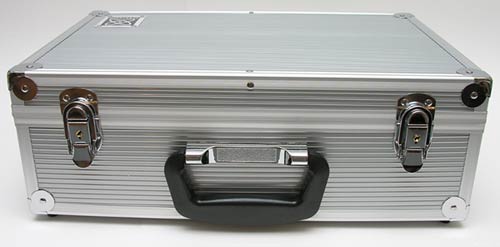
I knew I had crossed over into an entirely new dimension in radio controlled toys when the airplane arrived packed in its own lockable aluminum briefcase.
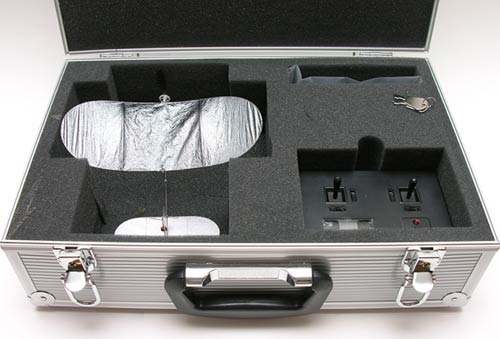
When I first opened the case, I became a bit terrified with what greeted me… I didn’t think this tiny airplane was going to survive more than a couple of minutes with me at the controls!
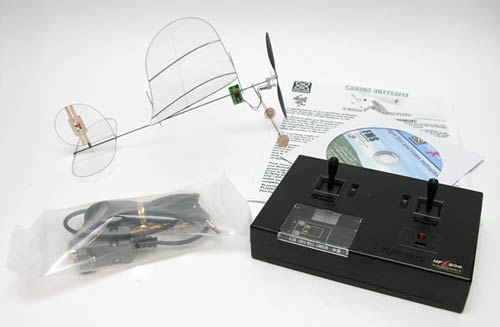
Neatly packed in the case is the Carbon Butterfly, Multi Function Transmitter, Lithium battery, computer serial cable, CD and instruction pamphlet.
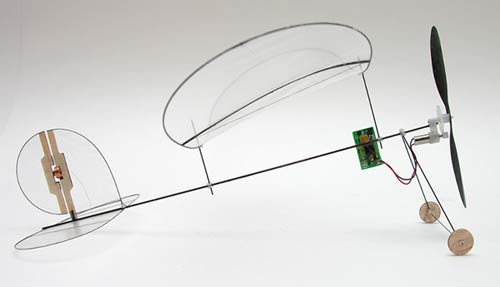
The first time you see the Carbon Butterfly, you won’t believe it is robust enough to fly, let alone survive a crash. This little guy weighs about as much as a sheet of typing paper. The actual weight is approximately 3-4 grams. Repeat after me… light as a feather!
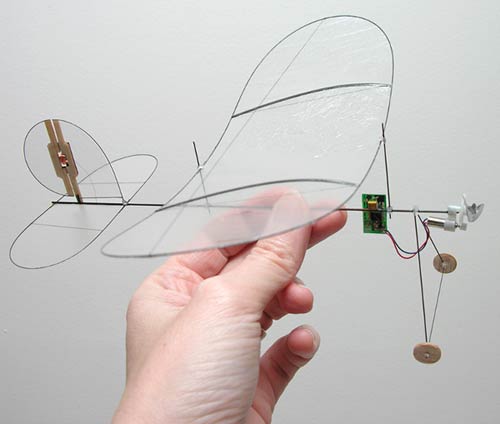
Something this small couldn’t possibly be strong enough to withstand much abuse could it? Well, you have to remember the name of this airplane… Carbon Butterfly. The frame is made of carbon fiber which is as flexible as fiberglass and as strong as steel. The wings and tail are covered in a very thin layer of Mylar and the tiny landing gear (wheels) appear to be made of Balsa wood.
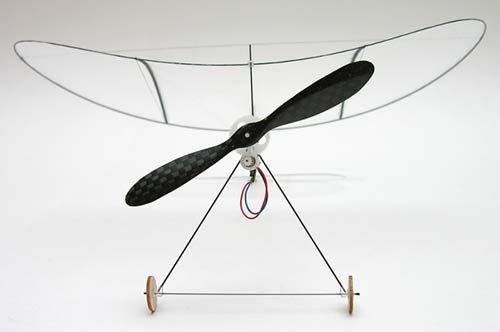
The closer you look at this little airplane, the more impressed you will become. Check out the propeller which is also made of carbon fiber. And the wing, look at the design. It’s so fragile looking yet surprisingly strong.
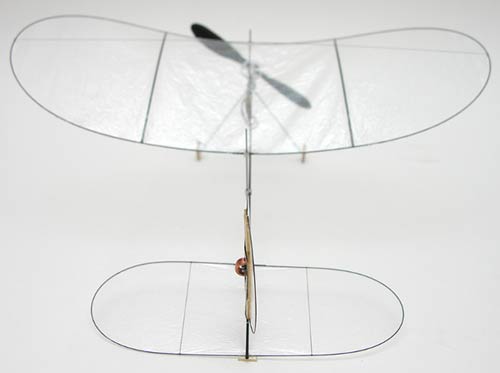
The image above is pretty good at showing the Mylar wing covering. It’s very very thin. Of all the parts on this device, this covering is probably the most prone to breakage. That’s just a guess though as I have not damaged mine (yet).
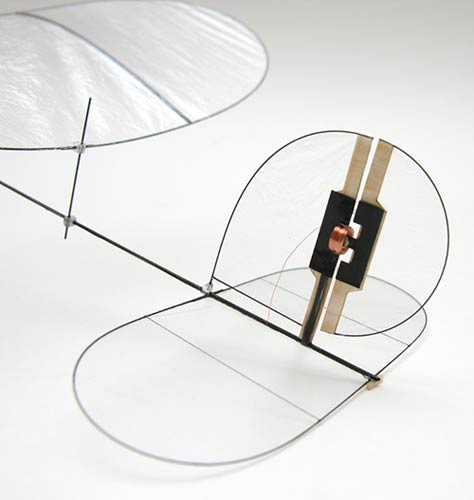
The rudder on the tail is fully controllable. Also notice the various connection points throughout the Carbon Butterfly’s frame. These are called pylons and can be used to make fine adjustments to the plane’s flight patterns if needed.
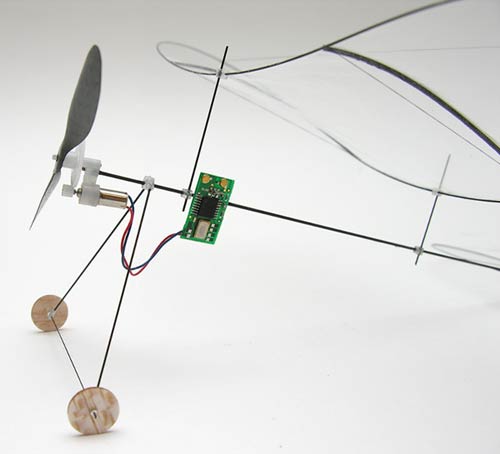
A Swiss engineered gearbox drives the propeller which is powered by a tiny 4mm coreless motor. Connected to the motor is a small circuit board with magnetic contacts for the equally small Lithium ion battery.
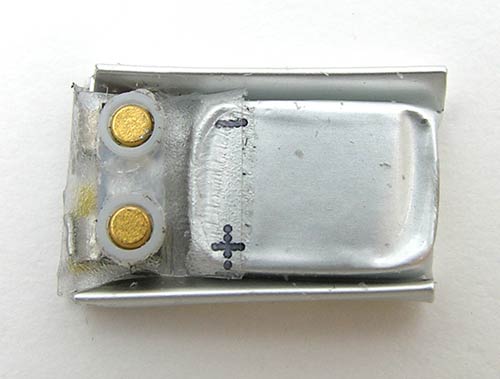
Here is a close up of the battery, which is only about .75 x .50 inches. Plantraco calls this battery the Bahoma cell. That stands for BAttery HOlder using MAgnets. It doesn’t require a connector, pins to align, etc…
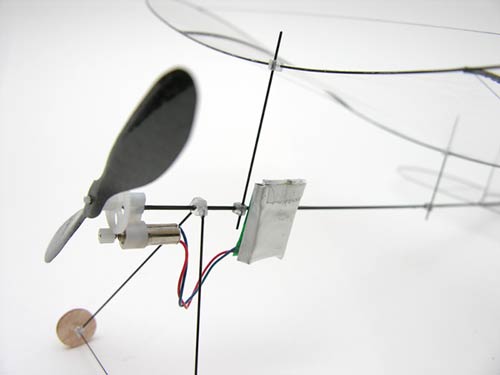
You just hold it up to the contacts on the tiny circuit board and it clicks on to the leads. Extremely easy to do. Of course, that ease comes with a price. More about that in a minute.
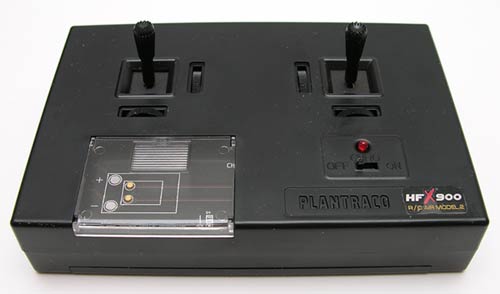
The Carbon Butterfly comes with a radio controlled transmitter that is powered by 4 AA batteries which are not included. Besides controlling the plane, the transmitter also is used as a charging station for the lithium ion battery.
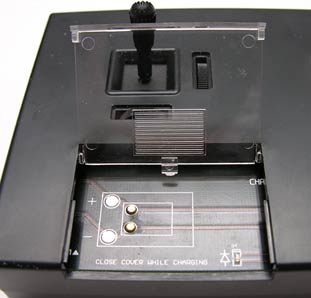
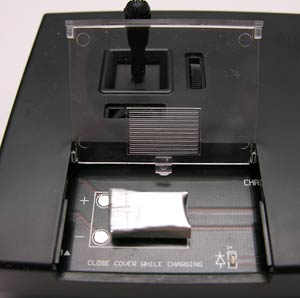
The battery charger is located under a small cover. Like the plane, the contacts for the battery are magnetic, so you just have to set the battery on the connectors for them to snap into place. Completely charging a low battery can take as long as 60 minutes according to the instructions that came with the plane. I’m not quite sure of how much flight time you can get per charge. I was able to fly off and on for 15-20 minute a few times and still had juice left.
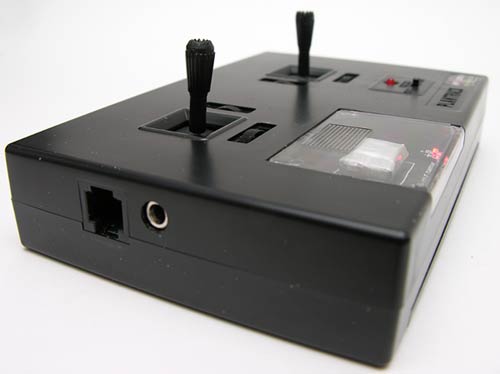
The hand held transmitter has thumb controls for throttle and rudder. The joystick-like controls don’t have springs that snap them back to center, but they are easy to use. You might notice the earphone like jack and phone style jack in the image above. I’m not sure what the phone jack is supposed to be for, as the instructions don’t mention it. But the earphone style jack is used with the included PC serial cable and flight simulator which is included on the CD that ships with the plane. The simulator allows you to get the feel for using the transmitter before you actually use it on the real Carbon Butterfly. The software is PC only though :o( I skipped the flight sim and jumped right into trying to learn to fly the real plane.
The Carbon Butterfly is an INDOOR plane. You don’t want to use it outside unless it’s dead calm (no breeze). Remember, I told you this plane weighs less than a sheet of paper… so you get the idea. Now when I say it’s an indoor plane, you really need a nice open space to fly in. Especially as a beginner. Unfortunately for me, all my rooms are full of furniture, hanging lamps, etc. So I had a bit of trouble trying to get the hang of flying this little guy.
The biggest problem I had with the Carbon Butterfly was with the magnetic battery. Everytime I crashed the plane into the wall or other object, the battery would invariably fly off. Most of the time I didn’t have that much of a problem trying to find it, but sometimes the Silver color would blend in with my carpet and it would take me awhile to spot it. I almost went looking for a bright red permanent marker to paint it at one point. I really think that some type of secure clip should be considered so that the battery doesn’t disconnect from the plane so easily.
I found the Carbon Butterfly to be a lot of fun. It is easier to control and maneuver than the Picooz helicopter and is a tough little plane. I crashed it many many times into the walls and furniture and it is still working fine with no signs of injury.
The main problem with the Butterfly (other than the magnetic battery issue) is that it is so expensive. You wouldn’t want to give this to a young child. Nope, it is definitely a big kid toy. If you are an aficionado of RC toys (or aspire to be one) and aren’t scared away by the price tag, take a look at the Carbon Butterfly. You’ll have hours of fun with this one.
Gerber Gear 22-47162N Fast Draw Folding Assisted Opening Pocket Knife, Fine Edge, Black
$42.73 (as of 12/23/2025 17:15 GMT -06:00 - More infoProduct prices and availability are accurate as of the date/time indicated and are subject to change. Any price and availability information displayed on [relevant Amazon Site(s), as applicable] at the time of purchase will apply to the purchase of this product.)Gerber Gear EVO Jr. Folding Knife - Serrated Edge [22-41493]
$28.99 (as of 12/23/2025 17:14 GMT -06:00 - More infoProduct prices and availability are accurate as of the date/time indicated and are subject to change. Any price and availability information displayed on [relevant Amazon Site(s), as applicable] at the time of purchase will apply to the purchase of this product.)Product Information
| Price: | 299.99 |
| Manufacturer: | Plantraco |
| Pros: |
|
| Cons: |
|



Gadgeteer Comment Policy - Please read before commenting
Post your comments on the Plantraco Carbon Butterfly R/C Airplane review.
http://www.the-gadgeteer.com/review/plantraco_carbon_butterfly
Just click the POST REPLY button on this page.
I HAVE THIS MINI AIR PLANE I FOUND IT IN THE DUMPSTER A FEW YEARS AGO IN CRESTWOOD ILLINOIS & IT ACTUALLY WORKS IT FLY’S IT WAS IN THE PROTECTED CASE WITH THE TWO LITTLE BATTERYS AND THE REMOTE CONTROL ITS IN PERFECT CONDITION THOUGH ITS BETTER FOR INSIDE FLYING BECAUSE SOMEDAYS OUTSIDE ARE TOO WINDY FOR IT THOUGH THERE WAS NO CD BUT THE FCC ID NUMBER IS NYIHFX900 & I WAS THINKING OF GIVING IT TO MY UNCLE FOR HIS BIRTHDAY ALSO THERE IS NO POWER CORD THAT GOES TO THE BATTERY CHARGER SHOULD THERE BE A POWER CORD AC ADAPTOR FOR 120VOLT POWER CORD ? REACH ME AT [email protected]
Great review, Julie. I really like this airplane and want it for my collection…but I do look forward to it going down in price first.
For those who can’t afford the high price tag, I recommend Air Hogs Aero Ace airplane by SpinMaster which goes for $30 or less. This toy is fun to fly.
Why would you spend $300 plus on this airplane when you can buy the Parkzone Vapor for a 3rd of the cost with all the same features? Somebody please justify the difference for me and I’ll buy one of these. Is it FM or 2.4? Nice carry box, can probably get one of those for $25 – $35 just wanna know why these are selling and who too? Perhaps someone unaware of what else is out there. THanks for any replies. 🙂
I splurged and bought this tiny plane on sale from plantraco @ $179.00. The CB is fragile as the super thin mylar easily becomes detached from its frame. The VStab (vertical stabilizer) is supported by balsa wood, mine was unreinforced and broke apart very easily. I discovered on Plantraco’s web site that they use carbon fiber to reinforce the balsa wood, but there was none of that. Then, by email, Jason of Plantraco informed me that they now use a fiber of a more neutral color, but there was none of that either. Then Jason offered to rebuild the VStab for me.
Having never flown the plane it is now back at Plantraco’s place in Saskatoon, Saskatchewan, Canada, an expensive shipping situation. Conclusion: This plane is very fragile, also as I suspect, defective.
Note: I also own the Parkzone Vapor and Night-Vapor, Similar construction but more than twice as big and 4x the weight of the CB, (still only about 15 Gm) On the newer Vapor, the wing material attachment is reinforced by tiny strips of clear tape. Plantraco should follow their lead. Since the Vapor is labeled “Ultra micro”, the CB can be labeled “nano”, The CB does not have a horizontal elevator and is only 2 channel while the Vapor does have a Hor. elev. and is 3 channel, that is the big difference!
Stay tuned!
I currently own a Parkzone mini vapor and it flies great! 3ch, yet half the size of the parkzone mini vapor! Dsm2 2.4 ghz! And yet only 29 bucks! Go check it out!
Can I order on line from India?